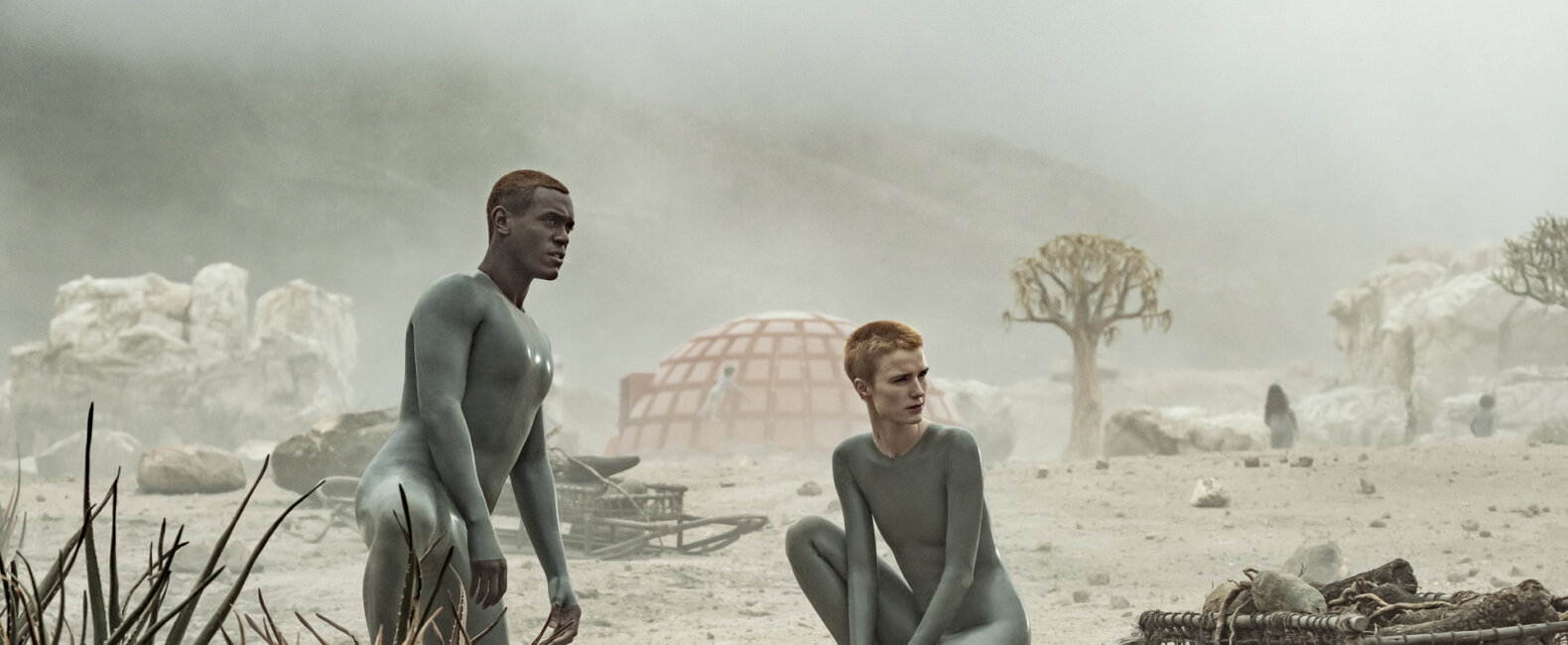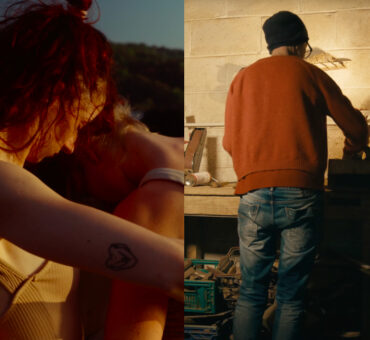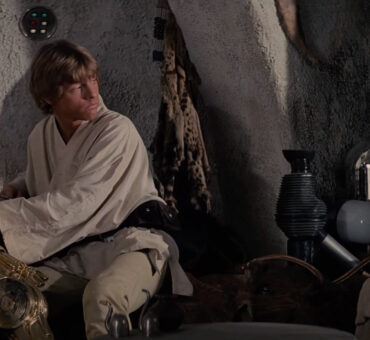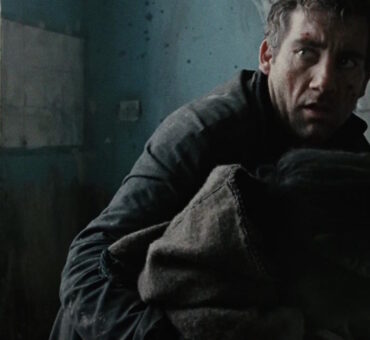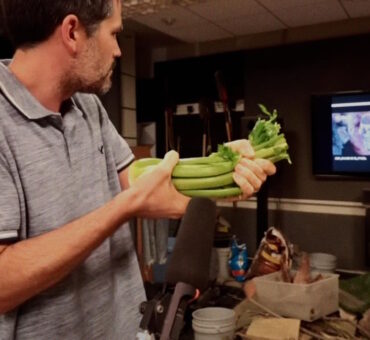The career of cinematographer Ross Emery, ACS, includes a large number of major effects-heavy science fiction films, ranging from miniature photography on Dark City and second-unit work on The Matrix trilogy to main unit DP duties on The Wolverine. His latest project, the HBO Max series Raised by Wolves, is his latest venture into sci-fi territory.
The series was produced under the Scott Free banner and features the first episodic TV work by director Ridley Scott since Z-Cars over fifty years back. Set on a planet in another star system, a pair of androids work to raise a new generation of humans after Earth has been destroyed.
A veteran of Scott’s Alien: Covenant, for which he shot second-unit (plus three dramatic shorts promoting that feature), Emery lensed half of the series, all shot on stage and location in South Africa. We talked with Emery about rethinking the sci-fi genre, making room for VFX, and post-production during COVID.
Musicbed: What was your initial reaction when offered this project?
What fascinated me about the story was that it didn’t read like a conventional science-fiction script, with people trapped in a spaceship floating through the vast void. It avoided a lot of sci-fi tropes. I made a deal with the producers that allowed me to be on-set during a couple of weeks as Dariusz and Ridley shot the first two episodes on location. So I was able to see what they were doing and how they organized the workflow. Then I sort of morphed all that into what we’d be doing after they finished. It made for a pretty smooth transition. I didn’t just know what they were doing, but how they went about it and why they chose those routes. Having worked on Covenant, I knew how you have to take the flavor and DNA of Scott Free and Ridley Scott films into account. Ridley is a very pragmatic filmmaker. He doesn’t hesitate spending money on essential things, and some may consider that extravagant, but it’s actually offset by his efficiency. If he doesn’t think it absolutely necessary to put up a bluescreen to extend a background, then he’ll recompose the shot to get it all in-camera. In this era of wall-to-wall CGI and huge set extensions, it’s actually very refreshing to see this kind of thinking.
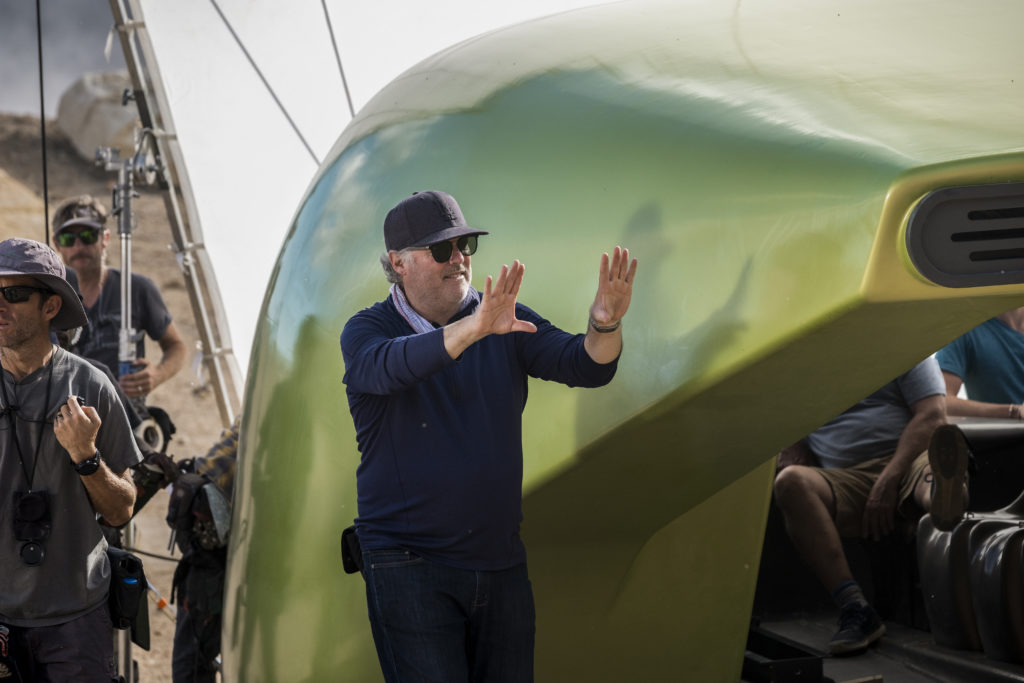
This shooting style can be described as ethnographic.
The storytelling methods became kind of anti-sci-fi in a way. The first couple of episodes feel at times more like a National Geographic documentary. We spend a large amount of time on location, as the landscape is actually quite important to the story arc. The bleak desert floor featured in the first four episodes has this amazing escarpment as a backdrop. Even conventional coverage of two characters in the foreground benefits enormously from that spectacle. We shot through the South African winter, which can be brutal, just horrifically cold, so it was nice to get back to the studio to build their habitat and some cave interiors.
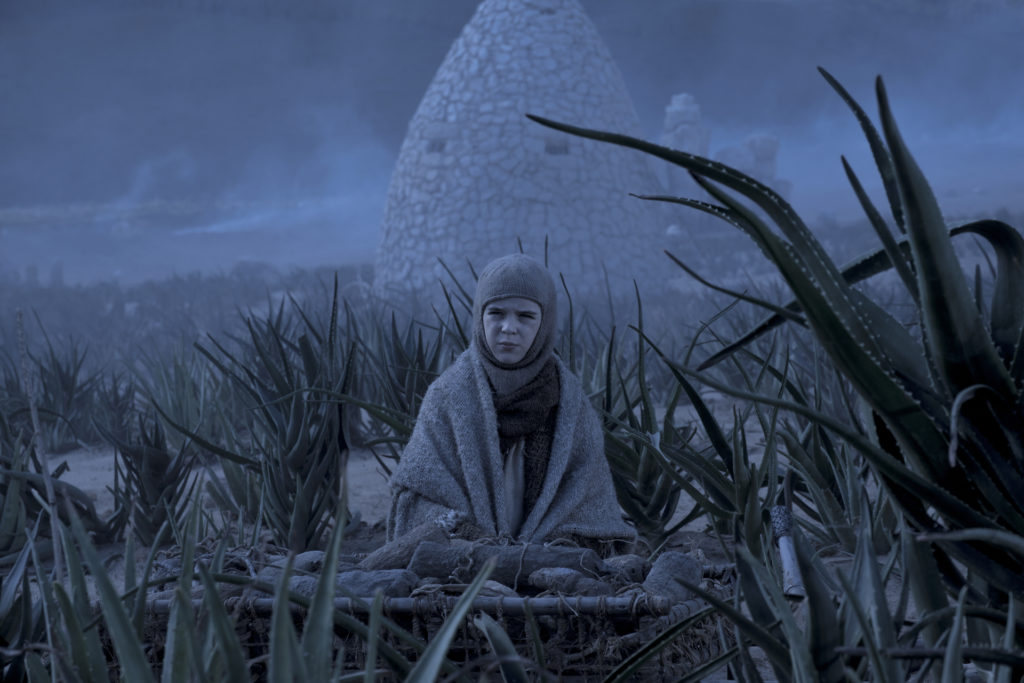
Walk us through the shooting principles you applied.
Ridley moved away from shooting on the RED cameras some years back to Arri’s Alexa, which we continued with here. Lens choices on this show [Panavision SuperSpeeds and Primos] stayed mostly between 27mm and 65mm on the three to four cameras run on each setup. That’s another reason I was glad to spend those two weeks on set with Ridley and Dariusz. I got to see how well they sustained gorgeous uncompromised lighting even when shooting from widely different angles. I saw Dariusz would sometimes move one camera in and another out as the scene progresses and the cast moves around.
Was it necessary to fly walls on stage to accommodate camera and lighting?
I personally am not a fan of deconstructing a set just to bring dollies and a 45’ Technocrane in; while it may make things easier on me and my crew, it disturbs the workflow for the actors and director. I strongly believe that the less we interfere with an actor’s arena, the more everybody benefits. Even if you wind up on a wider lens and are a bit closer than necessary, you haven’t messed about with things to a significant degree, or slowed things down. As a result, we used a lot of LED panels, and custom-made fabrics with LED woven through them, so they could wrap around corners and attach overhead.
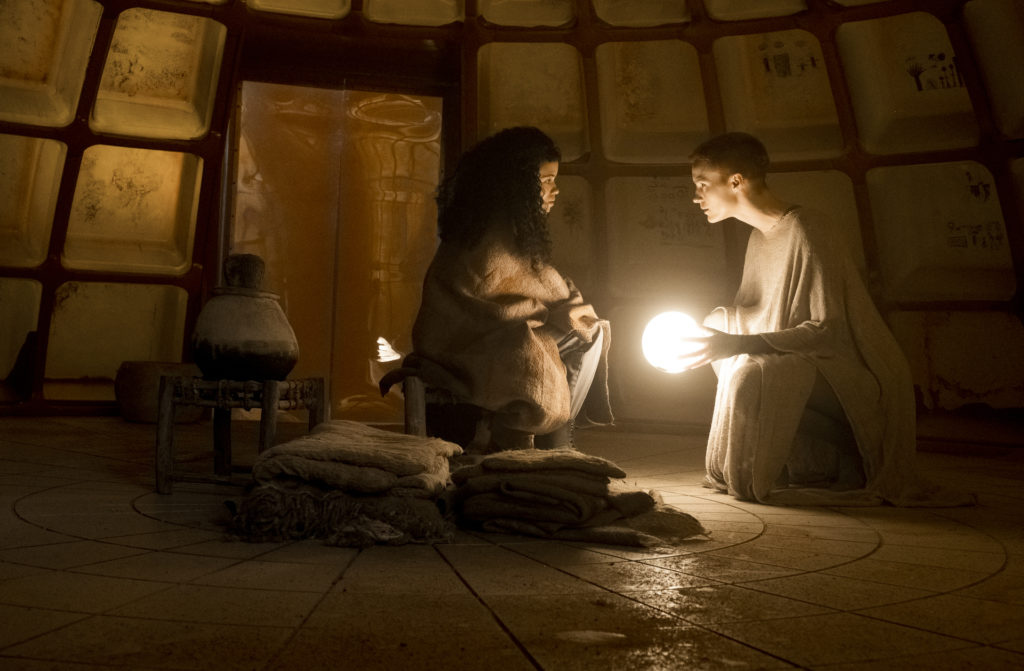
How do you approach lighting on a project like this?
I like to keep a kind of truthfulness to the light, and I usually embellish practicals with off-camera lighting. It’s a matter of getting together with the art department early on to design working units that look like they belong. We had discussions about a dead spaceship that has crashed and fallen down a hole. Would there be functioning instruments and lighting? Without a motivating emergency light, where is your light coming from? Also, I like to get the set as lit as reasonably possible before the actors and director start blocking, at least the main key and whatever practicals are in-frame. Having those in place can have a positive effect on staging.
How did you handle aerials?
We had some helicopter shoots as well as drone work. I sometimes worry about drones taking you out of a scene, so we used them in very specific, justifiable ways, like POVs for our flying character. I used one with a powerful light on it for a prison yard scene, so the drone functioned as an aerial surveillance unit. That was a creative way of doing something I’d tried previously on a car commercial, since it integrated nicely as a piece of future tech.
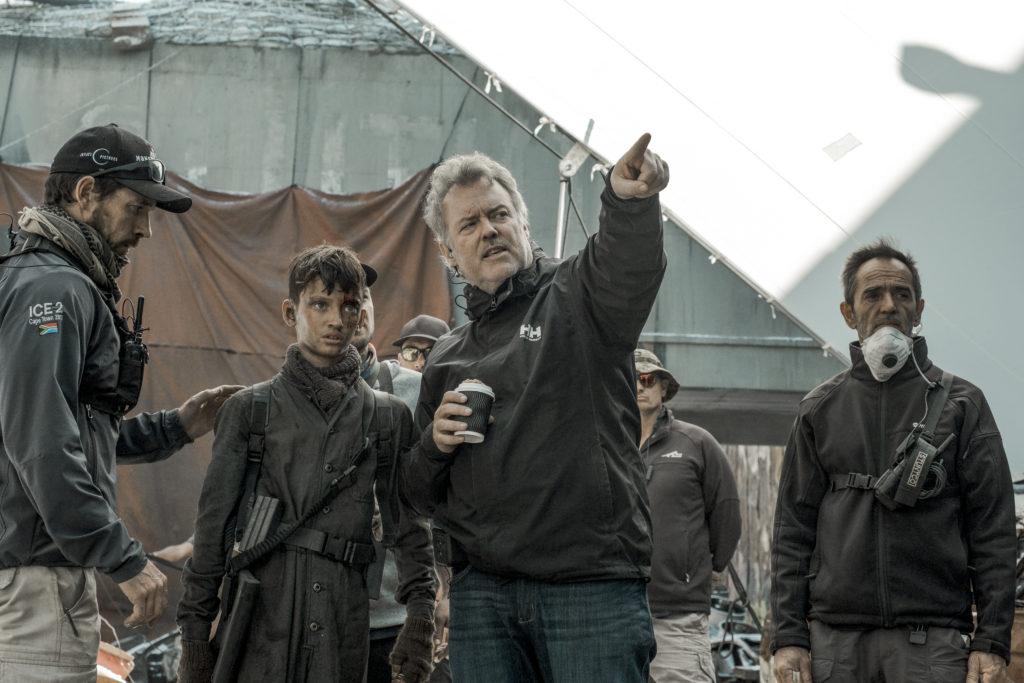
Did you find the production schedule for TV to be a challenge?
Having never shot TV, I was initially concerned about crazy 18-hour days, but this schedule was pretty generous. We shot in two-episode blocks, with between twenty and twenty-five days allocated each time. We only rarely ran two crews simultaneously on different locations. Part of the reason for this working is due to wardrobe, makeup and prosthetics, all keeping up straight through. After the blocks, we fitted in a couple of two- or three-day pickups, during which time Erik and I shot pickups for the other’s shows.
You’ve been involved with VFX-oriented shows throughout your career. Do you have a particular mindset or methodology for navigating those projects?
I still find that the best effects work comes out of having plenty of prep to work things out on set. When you can capture elements in-camera, it always helps the final. I make a point of chatting with the VFX guy at the start of each show, not just to figure out what the challenges may be, but also to hear of new developments. I can actually track my whole career through various developments in effects. It’s come a long way from when I was lighting greenscreens for the first Matrix. That was a time when the lighting had to be very particular and exact to get everything even. With VFX taking larger parts of the budget, the team on-set is really on the spot, especially when it comes to the amount of time their end takes up. I’m happy to do what I can to make their lives easier, because they’re going to be the ones who save me when I can’t hide a light out of frame.
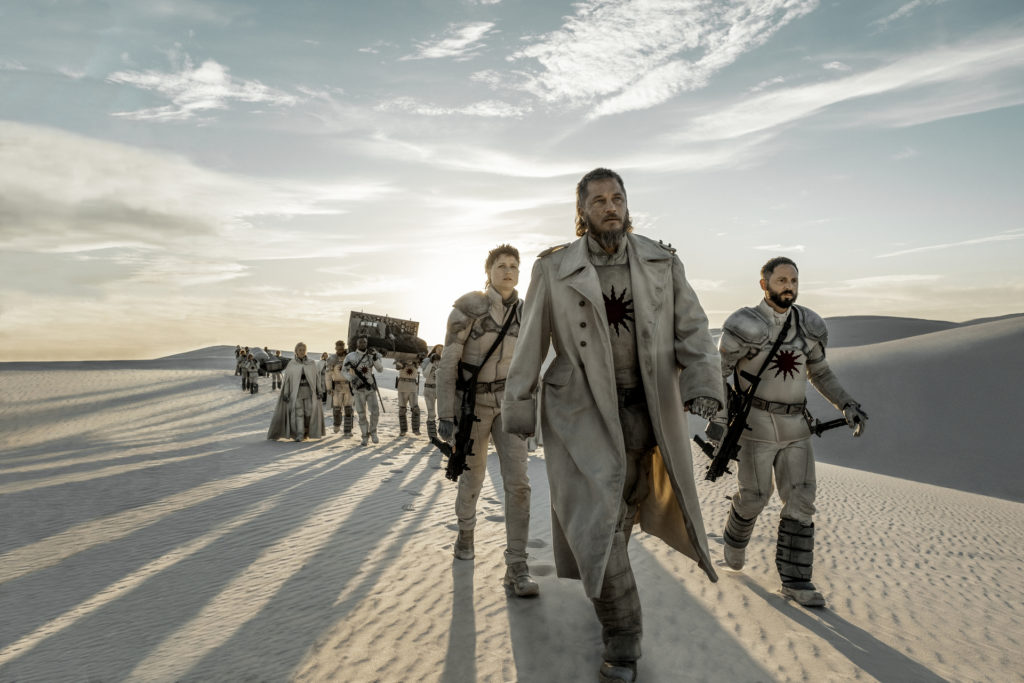
With COVID impacting post production, what kinds of steps were you able to take to maintain some involvement through the DI process?
I’m really appreciating the DIT position on shows now, because that role has become a really crucial link between the cinematographer and the final grade worked out in post production. There were four or five distinct LUTs and looks for different parts of the story, so that template was maintained by the DIT throughout all the shooting done by our four directors and three DPs, ensuring editorial and VFX had a clear idea of my intent, and the digital intermediate was handled by Company 3’s Stephen Nakamura, who is one of the best graders in the world.
What are your thoughts about how the show has been received?
I was very fortunate with the directors on my shows. Luke Scott and Alex Gabassi were very different stylistically – Alex was more oriented toward moving camera, while Luke would develop the scene during blocking and form it up so perfectly that I knew exactly where to put the camera — but they both knew and respected the rules of this world. And the whole crew was getting more and more excited as the later scripts came in, to the point we were having massive chats together an hour after reading them. There’s a real progression in the series, so that you may be thinking in episodes 6 and 7, ‘that’s pretty cool, this is nice,’ but I can’t wait till viewers get to episode 8 and beyond. Then it is going to be ‘Oh, my God!’
Dig into the world of high-level visual effects work by reading our interview with Dave Asling, whose company built miniatures and models for The Mandalorian.















































































